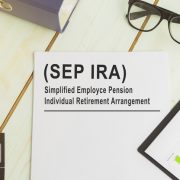Be Wary of These Claims about Self-Directed SEP IRAs
When it comes to retirement, there are a lot of strange claims out there. And for many experienced retirement investors, it doesn’t take much to set off your inner alarm bells. But what if you don’t know much about an account type like the SEP IRA? How do you know when claims are dubious or not? It takes research, knowhow, and a good foundation of knowledge. And it doesn’t hurt to have some of the claims spelled out for you, either. Let’s take a look at some claims about Self-Directed SEP IRAs that should make you wary about their truth.
Claim #1: Self-Directed SEP IRAs Have Virtually Limitless Contribution Limits
The truth about contribution limits? They’re called limits for a reason. There is an upper number. It’s true that contribution limits with a Self-Directed IRA might be a little more complicated than you’re used to if you contribute to, say, a Roth IRA. After all, there are two options here for contribution limits, including $61,000 for 2022 or 25% of compensation, whichever is lower. That’s information you can read at our Self-Directed SEP IRA page.
What you don’t want to do is take this claim and turn it into something like “25% of compensation” for any circumstances. If you earn $400,000 a year, for example, then it’s not going to mean that you can contribute 25% of that salary toward your SEP IRA, as enticing as it may sound. Keep reasonable expectations with contribution limits and you’ll fare much better.
Claim #2: Self-Directed SEP IRAs Are Only for Solo-Preneurs
The phrase “Solopreneur” typically refers to someone with a one-employee company. And while SEP IRAs are great for the self-employed, that doesn’t mean they’re by any means limited to that situation. The SEP IRA actually stands for Simplified Employee Pension IRA, which helps show that it’s designed for companies. If you’re self-employed, even without any other employees, it may be easy for you to secure a SEP IRA of your own. However, if you do have a company and want to build a retirement plan for employees, as SEP IRA program can be a benefit as well. These accounts certainly aren’t only for solo-preneurs.
Claim #3: You Don’t Need Anything to Sign Up for a SEP IRA
This claim may have its heart in the right place because it’s trying to demonstrate how simple it is to set up a SEP IRA. However, when you dive right into it, you’ll find that you do need a few certain qualifiers. For example, you should be a sole proprietor, independent contractor, someone who is self-employed, or in a partner or a corporation for an SEP IRA to apply. If you’re an employee without any self-employment income in the slightest, then building a SEP IRA doesn’t make sense. You don’t have any employees to take care of, except yourself, and you’re the employee of a different company from one you own. That’s the key distinction you’ll want to know.
Are SEP IRAs so complicated that you’ll never know which claims are dubious and which are not? The truth is, SEP IRAs are surprisingly simple. It just may be that you haven’t heard about how they work before, or you haven’t been introduced to them. Fortunately, you can keep reading about SEP IRAs here at the American IRA website, where we feature lots of information about different account types.
Interested in learning more about Self-Directed IRAs? Contact American IRA, LLC at 866-7500-IRA (472) for a free consultation. Download our free guides or visit us online at www.AmericanIRA.com.









